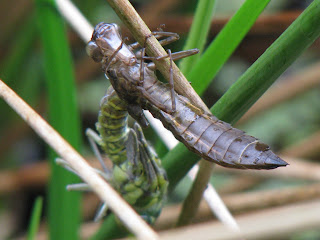I had a recent short trip to France for a wedding and there was no way I was travelling to the French Alps without going looking for marmots......
The alpine marmot, Marmota marmota has to be one of my favourite mammals - marmots are classed as rodents but they are just so cute and I would liken them to giant guinea pigs. I could sit and watch marmots foraging and lolloping around for hours. Marmots are found in high mountain meadows and pastures. They are omnivores and eat grasses, herbs but will also eat worms, insects and spiders.
 |
| Alpine Marmot, Marmota marmota |
Steve and I headed off for a walk the morning after the wedding and to be honest I wasn't expecting to see any marmots as we were on a pretty popular trail. However we decided to head off the beaten track and we hadn't been walking for long when I caught a glimpse of a marmot. At first the marmot was a little wary of us and headed into his burrow, but we sat quietly for a moment enjoying the sunshine until he came back out to investigate...
 |
| Entrance to a marmot burrow |
 |
| Alpine Marmot, Marmota marmota |
Although the marmots didn't seem too bothered by a couple of tourists they can be quite defensive and they will try and warn off intruders in their territory by beating their tails or chattering their teeth. Marmots can often be seen standing up tall to look out for predators and when they feel in real danger they will whistle a warning call to their fellow marmots.
 |
| Spot the marmots - there are two in this pic! |
 |
| Stunning scenery in marmot land! |
Further along the trail that day we met a group of hunters. They were out shooting grouse and ptarmigan. I asked if they were shooting marmots and they said they weren't today but that they do shoot marmots as they are classed a pests in some areas.
As we approached the hunters, I heard the marmots whistling out a warning call high up on the mountainside. I am guessing they could smell, see or hear the dogs and they alerted each other.
 |
| Alpine Marmot, Marmota marmota |













































